Oliver Mundy tarot
Original Tarot designs in Italian Renaissance style by Oliver Mundy.
Original Tarot designs in Italian Renaissance style by Oliver Mundy

Above: original tarot designs in Italian Renaissance style by Oliver Mundy. The cards were drawn with a mapping-pen and tinted in water-colour. All artwork and notes © Oliver Mundy.
NOTES
Atout VI: The Lovers A young man is torn between two ladies, one dressed all in leaves and the other in flowers. Latin inscription, Florem inter foliumque mico; Cytherea rependit /Qua tenear cedens et qua desiderer absens (‘I flutter between the Flower and the Leaf. On the one side I shall yield and be held, on the other I shall be lost and regretted. Venus is the judge.’) The debate between the Flower and the Leaf – in other words, between Beauty and Functionality – was a popular trope in mediaeval times, mentioned by Chaucer among others.
Atout XI: Strength Greek inscription, Ariston to heautou kratein (‘The best command is command of oneself.’) Caption, La Fortexia (modern Italian Fortezza) (‘Strength’).
Atout XII: The Hanged Man Judas Iscariot, traditionally shown with red hair, hangs on a tree; the money-bag, the price of his treachery, lies below, where worms are gathering. Latin inscription, Praeda capessendo perdis spiramina, Judas; / Stulte, an tantillos animâ mutaveris asses? (‘Judas, you have lost the breath of life through your lust for booty. Fool! did you give your soul for so small a price?’) Caption, Ladpenso (mod. Italian L’Appenso) (‘The Hanged Man’).
Ace of Cups A novice knight dedicates himself and his sword before the Holy Grail, which is inscribed Hic est sanguis meus (‘This is my blood’) and stands on an altar-cloth inscribed NON NISI PURUS ADIBIS (‘You shall not approach unless [you are] pure.’) The musical quotation above is from Wagner’s Grail opera, Parsifal.
Atout XIV: Temperance – shown robed in white and pouring water into a bowl. Greek inscription (from the archaic Greek poet Hesiod), Pleon hemisu pantos (‘Half is [worth] more than the whole’).
Atout XVIII: The Moon The goddess Artemis is seen in her three aspects: as the spirit of the Moon, as a huntress, and as overseer of the phantoms of the nether world. Latin inscription, Infernis tutrix, nostris quoque gloria silvis, / Caelivolansque vices ponti versura perennes (‘[She is] the Lady of the Underworld, an ornament to our [earthly] forests, and destined as she journeys the heavens to guide the endless ebb and flow of the ocean.’).
Atout XXI: The World Fortune, as a naked woman, stands on a globe inscribed Tamquam vas figuli (‘Like a potter’s vessel’ – a biblical expression of fragility). Crowds of souls, bursting from the womb of a monstrous figure, struggle upwards and grasp at gold ornaments that she pours from a cornucopia; but they miss their aim and tumble down into the gaping mouth of Hell. Latin inscription, En, ardor male pertinax habendi, / Ut Ditis prope devia arva ventum est, / Librat denique, ne per alta surgas (‘Behold, when you come to the tortuous halls of Hades, the wickedly persistent urge for property becomes a burden at last, so that you cannot rise to heaven.’)
Queen of Coins/Pentacles Archaic Italian inscription, Regina di Denarii ‘Queen of Deniers, or Pennies’).
Eight of Swords – interlaced, in accordance with early examples.
Four of Coins/Pentacles Latin inscription, Inicit insipiens supremum iactibus assem, / ‘Hoc agat’ exclamans ‘ne bona cuncta fluant’ (‘The fool cries “May this preserve all my goods from loss” and throws his last farthing on the table’)*.
* This was suggested by a remark attributed to the eighteenth-century Irish Member of Parliament Sir Boyle Roche, renowned for his muddle-headed eloquence: ‘It is the duty of every true lover of his country to give his last guinea to save the remainder of his fortune’.
Ten of Cups, with demonic mask surrounded by leaves.
The Latin inscriptions, in hexameter (or in the case of ‘The World’ hendecasyllabic) verse, were written especially for these designs.
By Simon Wintle
Spain • Member since February 01, 1996 • Contact
I am the founder of The World of Playing Cards (est. 1996), a website dedicated to the history, artistry and cultural significance of playing cards and tarot. Over the years I have researched various areas of the subject, acquired and traded collections and contributed as a committee member of the IPCS and graphics editor of The Playing-Card journal. Having lived in Chile, England, Wales, and now Spain, these experiences have shaped my work and passion for playing cards. Amongst my achievements is producing a limited-edition replica of a 17th-century English pack using woodblocks and stencils—a labour of love. Today, the World of Playing Cards is a global collaborative project, with my son Adam serving as the technical driving force behind its development. His innovative efforts have helped shape the site into the thriving hub it is today. You are warmly invited to become a contributor and share your enthusiasm.

Leave a Reply
Your Name
Just nowRelated Articles
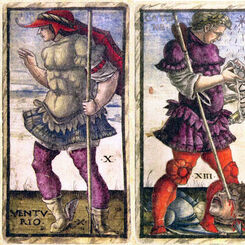
The Sola-Busca Tarot
Humanist Iconography, Alchemical Metaphor, and the Origins of the Illustrated Minor Arcana.
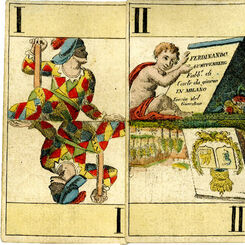
Natural History Tarocchi
Natural History Tarocchi by Ferdinando Gumppenberg, Milan.
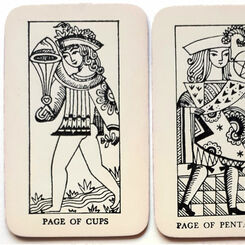
Rolla Nordic Tarot
Rolla Nordic Tarot was drawn by Paul Mathison.
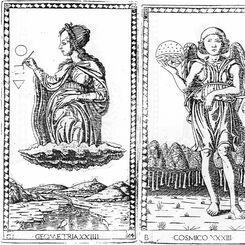
Tarocchi di Mantegna, c.1465
The so-called Tarocchi di Mantegna (c.1465) reflect an ideological structure bringing to mind the so...
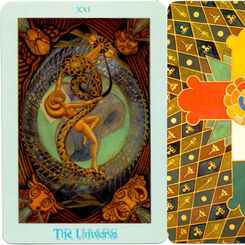
Thoth Tarot – Aleister Crowley Tarot
Aleister Crowley Tarot – the sombre luminary – Crowley and Lady Frieda Harris worked on the illustra...
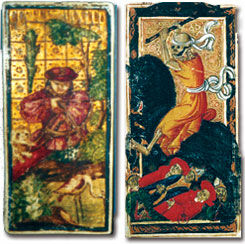
Perspectives on the History of Tarot
From a Renaissance Card Game to a Medium of Spiritual Meaning and Identity.
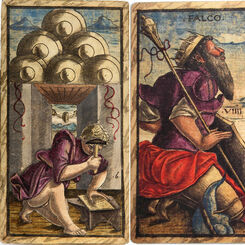
Sola-Busca Tarocchi
The Sola-Busca Tarocchi, c.1491
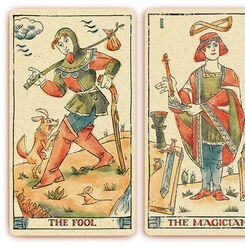
Tarot of Musterberg
Designed by Cesare Asaro to simulate decks from the 1700s or earlier, the Tarot of Musterberg is bas...
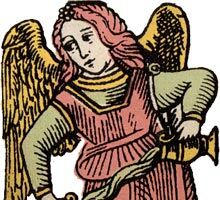
Insight Institute Tarot
During the late 1940s and 1950s The Insight Institute, of New Malden in Surrey, ran correspondence c...
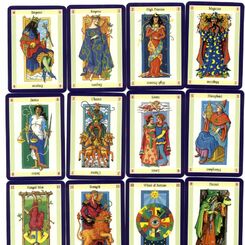
Russell Grant tarot
Russell Grant astro-tarot with optimistic and motivational illustrations by Kay Smith.
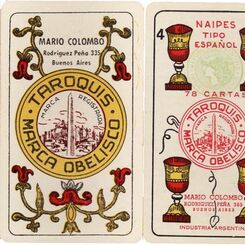
Taroquis ‘Obelisco’
78-card 'Taroquis Marca Obelisco' published by Mario Colombo, Buenos Aires, during the 1950s, 60s & ...
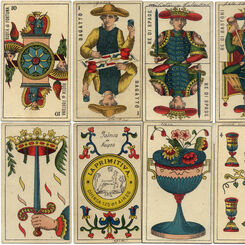
Tarocco Piedmontese by Fabrica de Naipes La Primitiva, Bs Aires
Tarocco Piedmontese by Fabrica de Naipes La Primitiva, Defensa 125, Buenos Aires c.1890.

Tarocco Piedmontese, Buenos Aires c.1900
Tarocco Piedmontese by Fabrica de Naipes La Primitiva, Moreno 248, Buenos Aires c.1900

Tarots Egipcios Kier
The “Tarots Egipcios” was first published by Editorial Kier S.A. in c.1971 with Spanish titles, with...

The Visconti-Sforza Tarot, c.1460
This pack of tarot cards appears to have have been made in the Bembo workshop in Cremona for Bianca ...
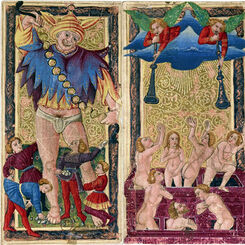
Hand-Painted Tarocchi Cards
Hand-painted Tarocchi cards sometimes known as ‘Charles VI tarot’, North Italy, 1475-1500.
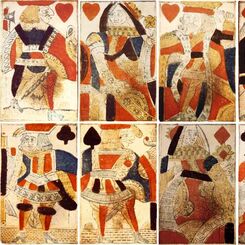
Hunt, c.1800
Standard English pattern playing cards manufactured by Hunt, c.1800.
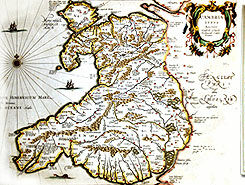
The Llewellyn Tarot - Welsh tarot cards
The Llewellyn Tarot - Welsh tarot cards
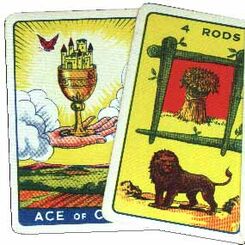
Thomson-Leng Tarot
The Thomson-Leng Tarot Cards were issued by the publishers of women's magazines during the 1930s. Th...
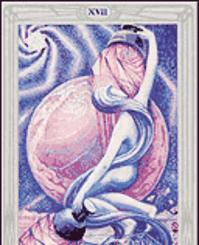
English Tarot Cards
The game of tarot was not widely accepted in England until the 1870s when a number of English occult...
Most Popular
Our top articles from the past 60 days


 Your comment here. Your comment here. Your comment here. Your comment here. Your comment here. Your comment here. Your comment here. Your comment here. Your comment here. Your comment here. Your comment here. Your comment here. Your comment here. Your comment here. Your comment here. Your comment here. Your comment here. Your comment here. Your comment here. Your comment here. Your comment here. Your comment here. Your comment here. Your comment here. Your comment here. Your comment here. Your comment here. Your comment here. Your comment here. Your comment here. Your comment here. Your comment here.
Your comment here. Your comment here. Your comment here. Your comment here. Your comment here. Your comment here. Your comment here. Your comment here. Your comment here. Your comment here. Your comment here. Your comment here. Your comment here. Your comment here. Your comment here. Your comment here. Your comment here. Your comment here. Your comment here. Your comment here. Your comment here. Your comment here. Your comment here. Your comment here. Your comment here. Your comment here. Your comment here. Your comment here. Your comment here. Your comment here. Your comment here. Your comment here.




















